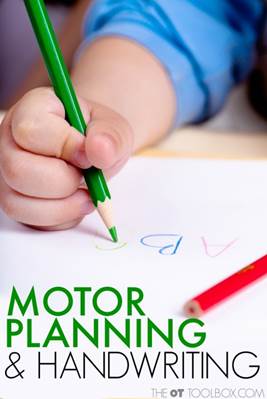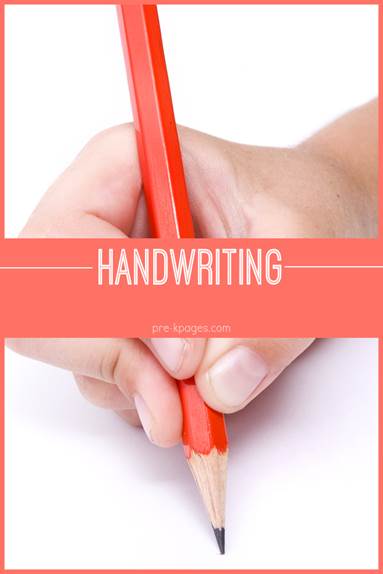Handwriting
All kids can improve their writing skills with lots of practice.
- Make Practicing Fun
Offer your child a special pencil or a rainbow of colored ones. Don’t just give her words to copy. Try simple word puzzles, anagrams, a game of hangman, or ask her to brainstorm lists around them to give writing practice a purpose.
- Encourage Drawing and Puzzle Games
In order to develop the physical requirements of writing —holding a pencil correctly, posture, control, dexterity, coordination — the more time your child spends manipulating objects, the better. Even using silverware can help him develop his fine-motor skills.
- Pinpoint the Problem
Common handwriting problems lie in four main areas: letter formation, sizing, spaces between words, and line-alignment. Focus your child’s practice on the letters or concepts that challenge her and make sure she’s using two hands to control the paper; One to write and the other to stabilize the paper.
- The Right Tools
If your child’s struggling with a regular pencil, try a smaller or shorter, kid-sized one. Ensure he/she has a good eraser handy so he’s not afraid of making mistakes.
- Writing Outside the Box
A sand box, shaving cream, or bowl of pudding make great surfaces to doodle or draw in. Whether your child’s practicing with his fingers, a stick, or a pencil, inspiring his creativity will lend appeal to writing.
Dominant Hand
Many children select hand dominance by the age of 2 or 3 if they have been given plenty of opportunities for fine motor development at home. However, you may notice some students who have not yet developed hand dominance.
If you have a child who has not yet selected hand dominance it is important that you provide them with plenty of fine motor exercises in and around your home and school. The more they exercise their fine motor skills the more quickly hand dominance will emerge.
The most important thing about working with children who don’t have hand dominance is to not force them into selecting a particular hand. Forcing children into hand dominance will make learning more difficult for them as they will always have to “translate” what they are writing to the other hand.
Proper Letter Formation
When we refer to proper letter formation we are referring to starting letter strokes at the top of the paper. All letters should start at the top and go down. The reason for this is because it is much easier to roll a boulder down a hill than it is to push it up, in other words, it is easier to write when you start at the top. When you write from the top down you can write more quickly than starting from the bottom up.
Research has shown that students in later grades with incorrect letter formation take twice as long to finish assignments and tests that require writing. Also, since it requires more effort to constantly push the pencil upwards their muscles become fatigued, slowing them down even further. This also attributes to negative attitudes towards writing.

